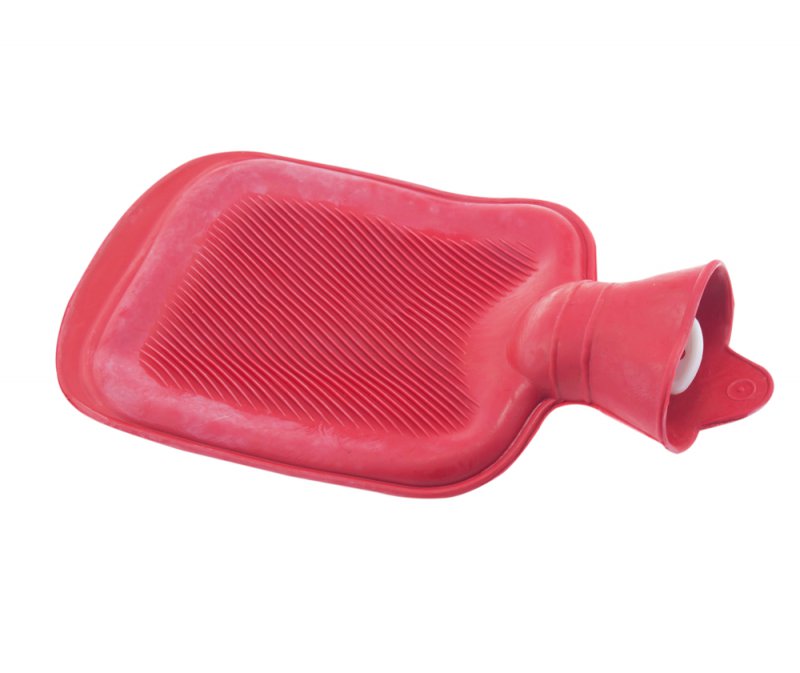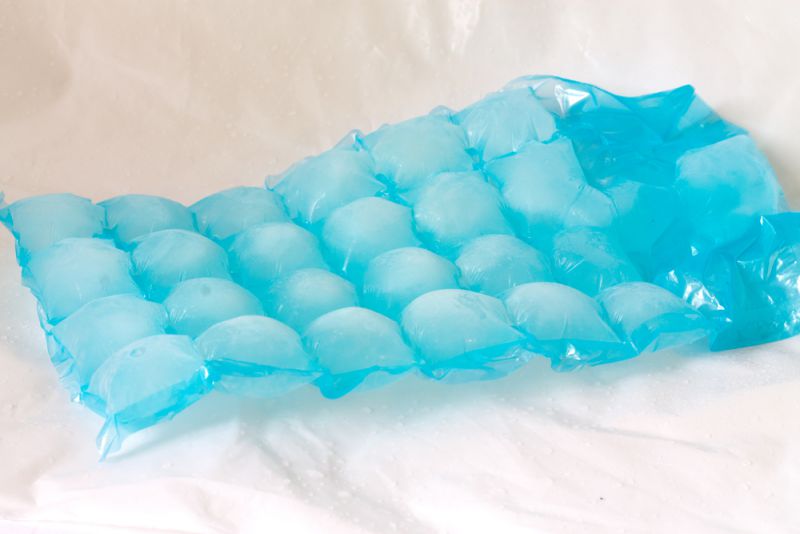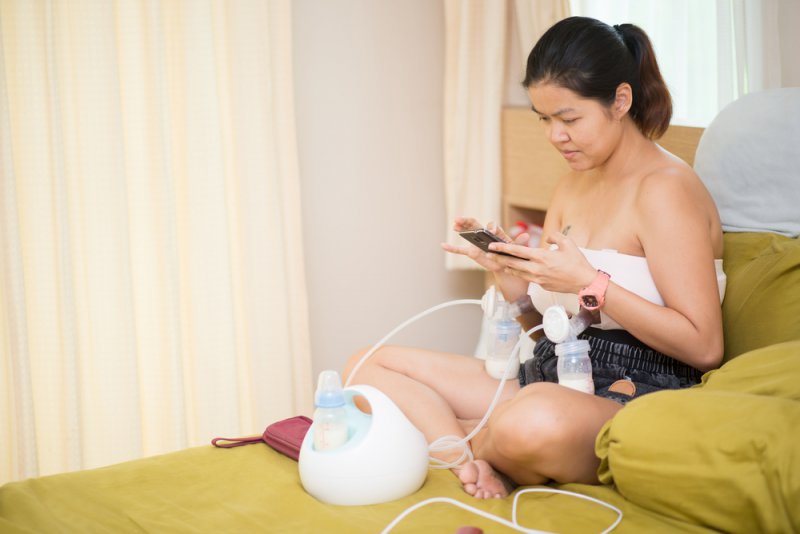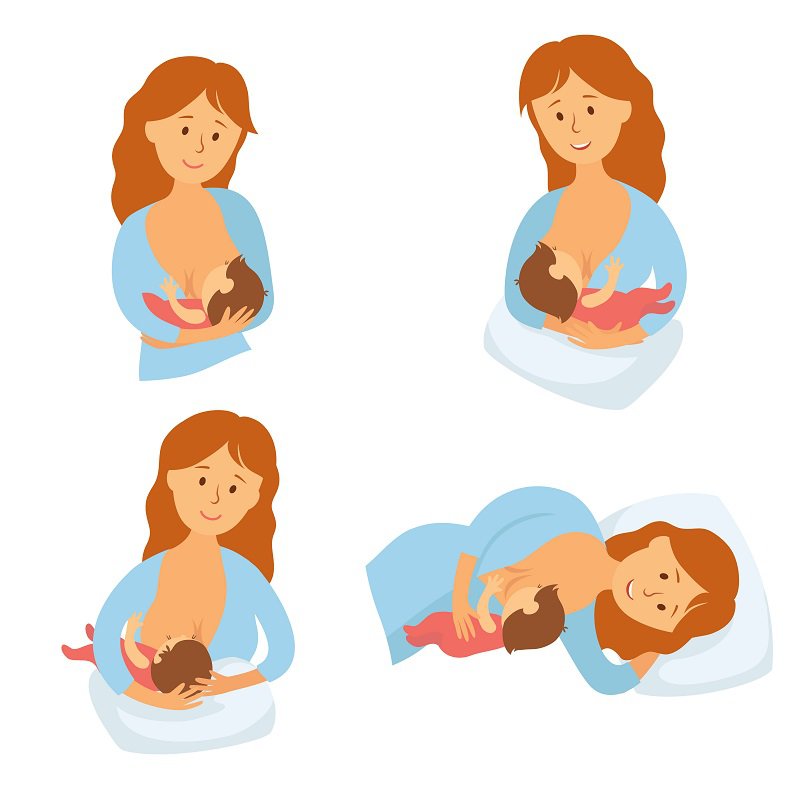What is Mastitis and how can it be treated?

Breastfeeding, while natural and extremely beneficial, can sometimes come with many challenges.
Some breastfeeding mothers have an easy time throughout their entire time breastfeeding their child, while other breastfeeding mothers face obstacle after obstacle.
The best way to ensure that you meet your breastfeeding goals is to not only surround yourself with support for your breastfeeding journey, but also to learn about and prepare yourself for any obstacles that may arise.
One thing in particular that every breastfeeding mother should learn about in advance is called mastitis.
What is Mastitis?
By definition, mastitis simply means inflammation of the breast.
The inflammation is typically caused by clogged or blocked milk ducts in the breast.
The breast is full of a system of ducts. Milk flows from deep in the breast to the nipples.
Sometimes the ducts may get plugged up causing the milk to build up behind the blockage.This usually causes pain and swelling and often leads to infection of the breast.
It is treatable, but if left untreated can be very dangerous for the breastfeeding mother.
Symptoms of clogged ducts include:
- Redness
- Swelling
- Lumpy area in the breast
- Pain
- Tenderness
- Hardness of the breast
Symptoms of mastitis are the same as symptoms of clogged ducts, but they are typically more severe and also can include:
- The breast feeling hot to the touch
- Fever
- Body aches and pains
- Weakness
- Fatigue
Prevention of Mastitis
Mastitis results from clogged ducts.
Clogged ducts typically happen when milk is being produced faster than it’s being removed from the breasts.
Since milk supply is all about supply and demand, this is likely to happen if you suddenly decrease nursing sessions or pumping sessions.
It may also happen if you go too long between feeds, or forget to switch which side your child nurses from at each feed. There are some simple steps you can take to help avoid clogged ducts and therefore avoid mastitis.
- Feed on demand. By feeding your baby on demand, you are unlikely to go too long between feedings.
- Switch sides. Switching the side your baby feeds on first during each nursing session ensures equal removal of milk from each side.
- Avoid tight clothing. If your bra or top is too tight and restricting on your breasts, it may increase your chance of clogged ducts.
- Check baby’s latch. You want to ensure that your baby has a good latch so that they are efficiently removing milk which will help prevent clogged ducts.
Treating Clogged Ducts and Mastitis
The best course of action when dealing with clogged ducts or mastitis is to begin treatment immediately as soon as you have any symptoms.
The progression of clogged ducts into mastitis and mastitis itself can often be rapid, so putting it off for any amount of time can severely worsen the intensity of symptoms.
When symptoms first arise, such as a hard spot in the breast and/or redness and pain, there are some things that you can do to try to take care of the problem yourself before medical treatment is required.
1. Feed Your Baby Frequently

When you have a clogged duct or mastitis, the most important thing to do is to remove milk from the affected breast as often as possible.
It’s a good idea to start each feeding on the affected breast before switching to the other side.
However, you still need to make sure that an adequate amount of milk is being removed from the unaffected side as well to avoid it also becoming affected by poor milk removal.
2. Don’t Wear a Bra

It can be helpful and make the breast drain more easily if you don’t wear a bra during the period of time when you are trying to treat a clogged duct or mastitis.
If you feel like you must wear a bra, try to keep it a little looser than you typically do.
3. Try to Relax

If you are able to relax more, it can encourage a strong let-down reflex which is essential for properly draining the breasts.
Try to slowly relax each part of your body during a nursing session from your head to your toes.
You can also consider listening to calming music and focus on and think about your baby during feeding to also help encourage a strong let-down.
4. Apply Heat Before Feeding

Warming the breast before your baby feeds can help to loosen any blockage and encourage better milk flow.
You can apply heat to your breast for a few minutes before each feeding. Anywhere from 5 to 15 minutes should work well for this.
You can try using a hot pack or a warm wet wash cloth, or even soak your breast in warm water using a container of some sort.
5. Apply Cold In-between Feedings

You can also try applying cold to your breast. Do this in-between feedings rather than right before or during a feeding.
The coldness should help with pain some and can also aid in reducing the amount of swelling of the breast.
6. Express Milk In-between Feedings

In addition to nursing frequently, you can also try expressing milk in-between feedings.
You can either hand-express your milk or you can pump.
This can help to keep the breasts empty and not allow the clogged duct or mastitis to continue to worsen.
7. Take a Hot Shower or Bath

Taking a hot shower or bath not only will help you to feel a little better but it can also help to loosen the clogged duct.
Try to express some milk while you’re in the bath or shower.
If you’re taking a shower, try letting the running water hit your breast directly, especially in the affected area as this can also help to loosen the clogged duct.
8. Try Different Nursing Positions

The position you nurse in can have an effect in the way that milk moves through the breast.
If possible, try to latch baby on so that their chin is at or pointed towards the affected area of the breast.
You should also try to have the affected area above your baby while nursing so that gravity can also play a helpful role in draining the milk from the breast.
One position that is a little odd but can be extremely helpful with clearing clogged ducts is sometimes called dangle nursing. Simply get on your hands and knees above your baby and nurse them with your breast dangling above them.
What if My Baby Won’t Nurse?
Sometimes when you have mastitis, your baby won’t want to nurse from your affected breast.
This is because the taste of the milk may be saltier than usual due to the mastitis.
The milk is perfectly fine and safe for your baby to drink, they simply may not like the difference in taste.
Many babies don’t mind the difference at all, but if your baby refuses to nurse from the affected side, you’ll still need to remove as much milk as possible.
Continue nursing from the unaffected side, and pump and/or hand express milk from the affected side. Doing this while your baby nurses from the other side may also help since it is when you are most likely to have strong let-downs.
When Medical Attention is Warranted
If you have been trying to treat clogged ducts or mastitis at home for 24 hours or more and still haven’t seen any improvement, you should seek medical attention.
If your symptoms are severe, don’t even wait that long and seek medical attention right away.
Never allow mastitis to persist for days without medical attention as it can be very dangerous.
It’s likely that your health care provider will simply give you a round of antibiotics.
Since you are breastfeeding, they should provide you with antibiotics that are safe for breastfeeding. You will probably notice improvement very quickly after starting the antibiotics.
Even if you feel 100% better before you are finished with your antibiotics, make sure that you still finish the entire round of antibiotics to ensure that symptoms don’t return.
Don’t Take Any Chances
Clogged ducts and mastitis are often able to be safely and effectively treated at home with no need for medical intervention.
However, if you are having severe symptoms or aren’t seeing improvement quickly, it’s better to not take any chances and go ahead and seek medical attention.
The medical treatment for mastitis is very simple, easy and effective. It is, of course, better to avoid mastitis altogether if you can so always make sure to be taking preventive measures.
You May Also Like
Most Viewed
-
5 Common Methods of Contraception
Last updated On by Percy Oad -
How to Cope with Male Infertility
Last updated On by Alina -
What is the Difference Between Primary and Secondary Infertility?
Last updated On by Madison -
How to start a child-free life after infertility
Last updated On by Jacinta







